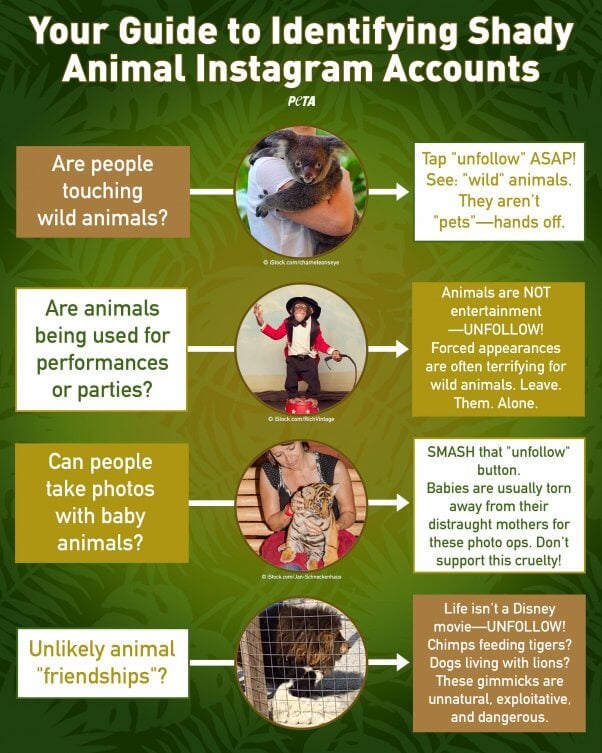In the age of digital communication, social media platforms like Instagram have become powerful tools for sharing experiences, emotions, and images. However, these platforms can also serve as channels for a darker side of human behavior: animal abuse. Imagine scrolling through your feed, only to come across an image or video that fills you with horror—an animal in distress that is being exploited for entertainment. This raises an important question: How do we effectively report animal abuse that we witness on Instagram?
Firstly, it is essential to understand what constitutes animal abuse in this context. Animal abuse can range from overtly violent acts, such as physical harm, to more subtle forms like neglect, exploitation, or the use of animals inappropriately for entertainment. Even if the act appears benign at first glance—a seemingly playful interaction with an animal—the underlying realities can be vastly different. Recognizing the multifaceted nature of animal cruelty is a crucial first step in addressing it.
Once you have identified a potential case of animal abuse, the next step is to gather evidence. Documentation is paramount. Take screenshots, save videos, and note the account name and any relevant captions. These pieces of information will be invaluable when reporting the incident. It’s all too easy to dismiss what you see as just another post in a crowded feed, but remember that your vigilance could make a difference in an animal’s life.
After compiling the necessary evidence, seek out Instagram’s reporting tools. Instagram provides a straightforward process to report content that may violate its community guidelines. To report a post, tap the three dots located at the upper right corner of the post, select ‘Report,’ and follow the prompts. Choose the appropriate category, which in cases of animal abuse, would involve selecting options pertinent to dangerous or harmful behavior toward animals.
However, reporting on Instagram alone may not suffice. It’s beneficial to engage directly with animal welfare organizations. Many of these organizations are dedicated to addressing issues of animal cruelty and have established protocols for handling reports. Sharing your findings with them could amplify your efforts. They have the resources and knowledge to take further legal action if needed. This is a proactive measure that extends beyond the realm of social media into tangible outcomes.
Furthermore, enlisting the support of the community can yield a powerful collective voice against animal cruelty. Consider sharing your concerns through your own Instagram account or other social media platforms. Raising awareness can prompt others to be vigilant and proactive about what they see online. Use hashtags related to animal rights, animal welfare, and specific campaigns to reach a broader audience, making sure to educate them about the signs of abuse and the importance of reporting it.
Another avenue to explore is direct communication with the user posting the abusive content. This approach should be undertaken with caution and sensitivity. Engage the user with facts, illustrating why their content may contribute to animal cruelty. For many, ignorance is often at the heart of their actions; they may not fully grasp the implications of their behavior. Providing them with relevant information could invoke empathy and change, guiding them toward a more ethical relationship with animals.
However, encountering resistance or hostility is not uncommon. In instances where your message is met with anger or dismissal, it is crucial to prioritize safety. Such interactions can escalate quickly, so always approach with caution. If necessary, disengage and focus on reporting and educating rather than confrontation.
One persistent challenge is the notion of accountability on social media. Unlike more traditional forms of media, individuals on platforms like Instagram often lack transparency. The anonymity provided by online profiles can lead users to engage in harmful behaviors without fear of repercussions. This detachment can foster a disconcerting environment where animal welfare is often sidelined. Thus, awareness and advocacy must extend beyond the virtual realm.
Using your experience and knowledge, take the initiative to chip away at the anonymity that breeds irresponsibility. Advocate for stricter community guidelines and greater accountability for content creators on social platforms. Encouraging Instagram to implement stronger measures against accounts that post animal abuse content can lead to meaningful change. Petitions and community-driven campaigns often find resonance by demonstrating that consumers care about accountability in online spaces.
As a diligent observer, strive to remain informed about local laws and regulations regarding animal welfare. Laws can vary considerably by region, and understanding these laws will enable you to take more effective action when reporting abuse. Familiarizing yourself with local animal protection agencies can aid in navigating the legal labyrinth often associated with animal welfare cases.
In conclusion, reporting animal abuse on Instagram is not just about clicking a button. It involves a series of intentional actions aimed at promoting animal welfare. Every measure, whether it is reporting a post, contacting advocacy groups, or engaging the community, contributes to a broader effort against cruelty. By taking a proactive stance, we can work collectively to create a more compassionate digital space—one that reveres the dignity and well-being of all living beings. The challenge ahead may seem daunting, but with awareness and advocacy, together, we can pave the way for a more humane future.










